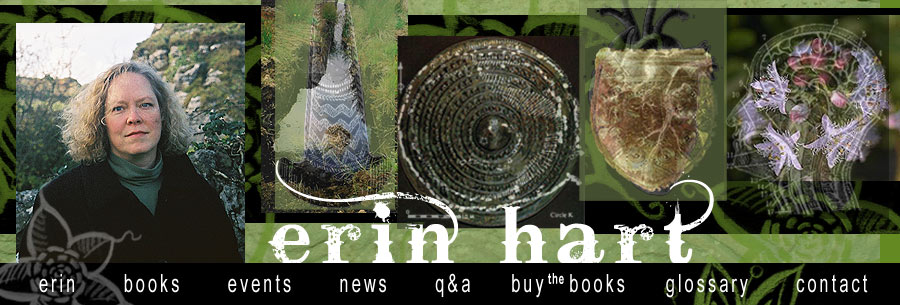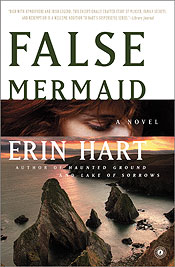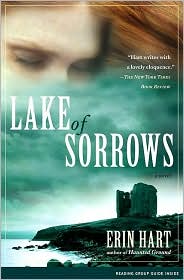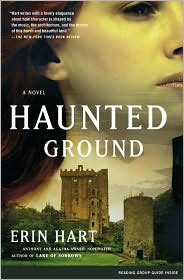DAY NINE
 Our last day in Ireland was spent in one of my favorite counties, Clare—aka The Banner County. We spent some time in Ennis, which is another great town for music, ducking into Custy's Music Shop, where Paddy's latest CD, Mixing the Punch, was playing on the PA system. What are the chances of that? 100%, I guess!
Our last day in Ireland was spent in one of my favorite counties, Clare—aka The Banner County. We spent some time in Ennis, which is another great town for music, ducking into Custy's Music Shop, where Paddy's latest CD, Mixing the Punch, was playing on the PA system. What are the chances of that? 100%, I guess!We had mussels again for lunch, and stopped to see the sheela-na-gig at the church in Kilnaboy, and then caromed around the Burren for the afternoon, stopping in for a drink at Gus O'Connor's pub in Doolin, quite possibly the most famous pub in Ireland.
At the seaside in Doolin, I read aloud to the group Paddy's recent poem about Micho Russell, a great whistle player and wonderful character who embodied the spirit of West Clare music. Here's a little taste:
Four years later, I went to a seaside spot
And heard his mild way of talking
Heard him hum a few notes
Saw him feeding squawking gulls
As they fluttered and pecked on the sand.
When his inky black jacket flew open to the wind
I saw a tiny tin whistle
That stood in his inside pocket
‘Faith’n,’ he said,
‘Look how they fight with the wind!’
‘Tis God’s will they fly at all.’
‘A mistake in the making.’
‘If we pluck them for cooking,
Not worth a hazel for atin’
An air might do them good
Before we leave them alone.’
And of course, no trip to Clare is really complete without at least a perfunctory visit to Saint Brigid of the Phone Box, the holy well outside Liscannor. Beside the saint in her glass case is an underground grotto filled with holy statues and rosaries and offerings for the dead.
 After our final celebratory dinner together as a group at the Falls Hotel in Ennistymon, a few of us ventured out in the rain to local pub, where hot whiskey was the order of the day.
After our final celebratory dinner together as a group at the Falls Hotel in Ennistymon, a few of us ventured out in the rain to local pub, where hot whiskey was the order of the day.I took this photo over my head, just where the barman was preparing the lemons, slicing them carefully and studding them with whole cloves. It turned out looking like a Flemish painting, don't you think?














































